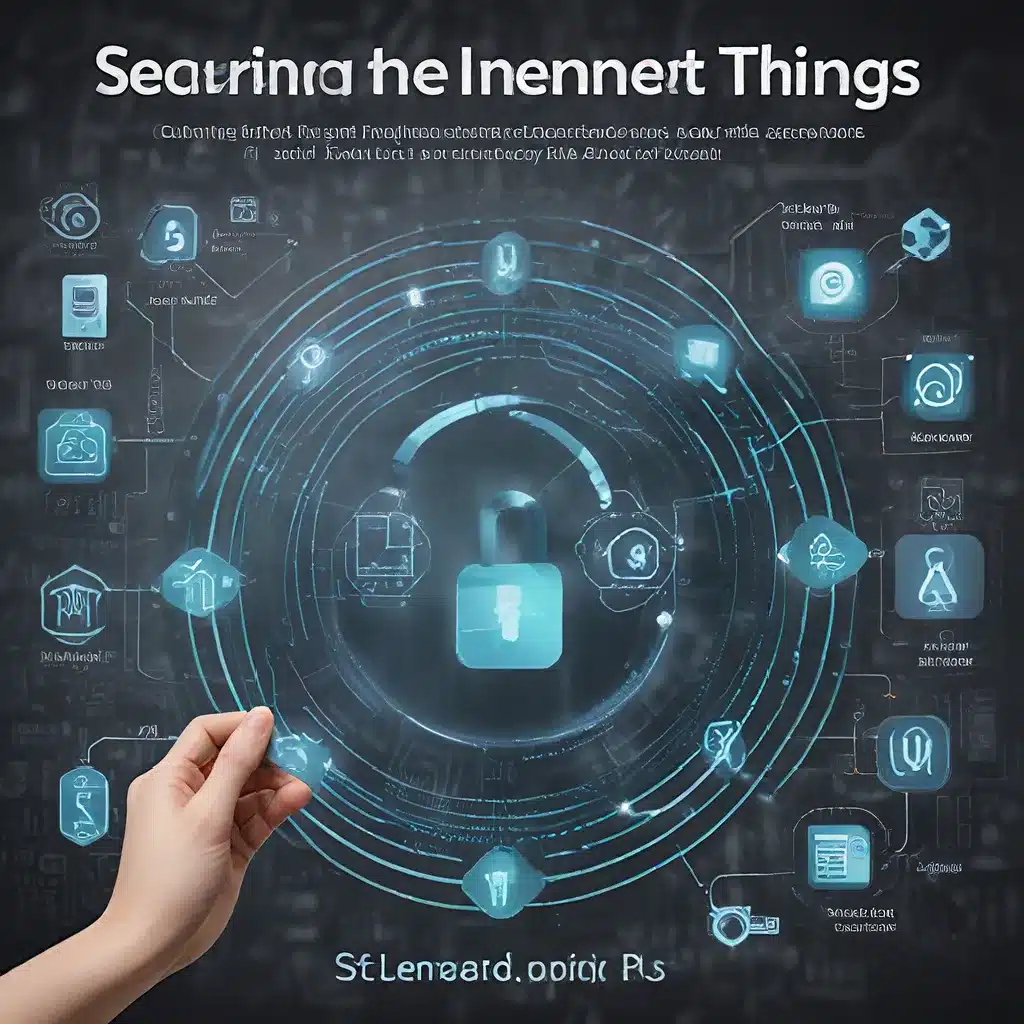
As the Internet of Things (IoT) continues to revolutionize our lives, security has emerged as a critical concern. With the proliferation of interconnected devices, ensuring the authentication and access control of these systems has become paramount. In this comprehensive article, we will explore the latest advancements in sensor network design, IoT applications, and the cutting-edge techniques being employed to safeguard these evolving technologies.
Navigating the IoT Security Landscape
The IoT landscape is a rapidly expanding ecosystem, encompassing a vast array of smart devices, sensors, and intelligent systems. From smart homes and smart cities to industrial automation and healthcare monitoring, these interconnected technologies have become integral to our daily lives. However, this increased connectivity has also exposed the IoT to a myriad of security threats and cyber attacks.
Malicious actors are constantly seeking vulnerabilities to exploit, whether it’s unauthorized access, data breaches, or denial-of-service attacks. Securing these systems requires a multifaceted approach that addresses the unique challenges posed by the heterogeneous nature of IoT devices and the vast attack surface they present.
Strengthening Authentication and Access Control
One of the key pillars in securing the IoT is robust authentication and access control. Traditional authentication methods, such as username and password, often fall short in the IoT ecosystem, where resource-constrained devices and diverse communication protocols present unique challenges.
Researchers and IoT security experts have been actively exploring innovative solutions to address these challenges. Elliptic Curve Cryptography (ECC) and Datagram Transport Layer Security (DTLS) have emerged as promising cryptographic techniques for IoT authentication. These approaches leverage the computational efficiency and security properties of ECC to enable secure communication and mutual authentication between IoT devices.
Furthermore, the development of dynamic access control mechanisms has become a crucial focus. Schemes based on attribute-based and role-based access control have been proposed to adapt to the ever-changing IoT environment, ensuring that only authorized entities can access sensitive data and critical system functionalities.
Addressing IoT Security Challenges
Beyond authentication and access control, the IoT landscape presents a myriad of security challenges that require comprehensive solutions. Data privacy, device management, and network security are just a few of the areas that demand attention.
Privacy-preserving techniques, such as differential privacy and homomorphic encryption, are being explored to protect the confidentiality of IoT data, even in the face of data aggregation and cloud-based processing. Secure firmware updates and device-level security mechanisms are critical for maintaining the integrity of IoT devices throughout their lifecycle.
Additionally, the interconnected nature of IoT systems has led to the development of secure communication protocols and network-level security measures. Software-Defined Networking (SDN) and edge computing architectures have emerged as promising approaches to enhance the security and resilience of IoT networks.
Energy-Efficient Security for IoT
One of the unique challenges in the IoT domain is the energy-constrained nature of many IoT devices. Implementing robust security measures can often be resource-intensive, potentially draining the limited battery life of these devices.
Researchers have been working on energy-efficient security solutions for IoT, leveraging techniques such as lightweight cryptography, secure hardware-software co-design, and energy-aware access control policies. These approaches aim to strike a balance between security and energy consumption, enabling IoT devices to operate securely while preserving their battery life.
Towards a Secure and Resilient IoT Ecosystem
As the IoT continues to evolve, the security landscape will undoubtedly become more complex. Emerging technologies, such as quantum computing and artificial intelligence, will present both opportunities and challenges for IoT security.
IoT developers, security researchers, and industry leaders are actively collaborating to address these challenges and build a secure and resilient IoT ecosystem. Through standardization efforts, open-source initiatives, and cross-domain collaboration, the IoT community is working to ensure the confidentiality, integrity, and availability of IoT systems, paving the way for a future where the Internet of Things is truly secure and trustworthy.
By visiting sensor-networks.org, you can explore the latest advancements in sensor network design, IoT applications, and security best practices. Stay informed and contribute to the ongoing efforts to secure the Internet of Things.